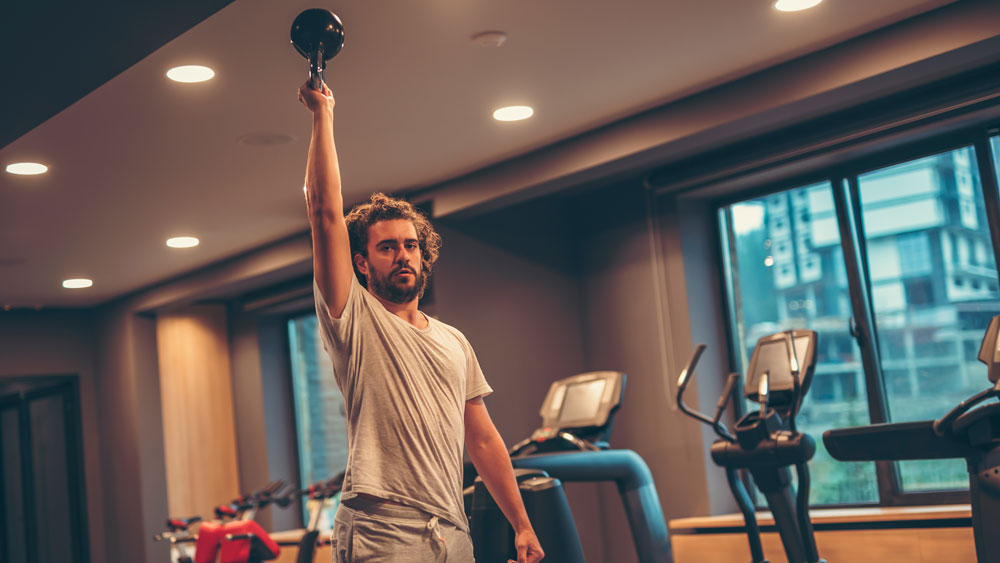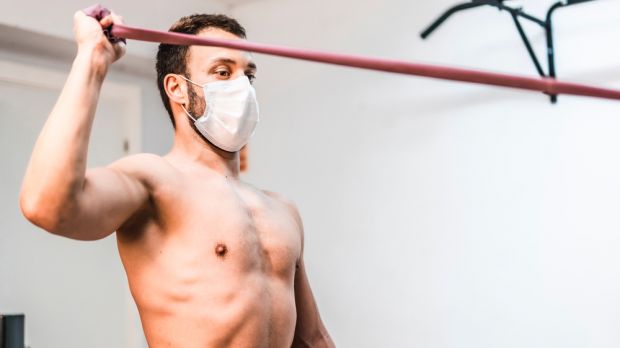The Best Rotator Cuff Exercises
Strengthen your shoulder joint with these essential exercises

No-one should take risks with their shoulders, especially during workouts. It’s an important area to strengthen using shoulder exercises, because that will help with a range of lifts, but push too hard and it’s easy to injure your shoulder joint and put yourself out of action for weeks or even months.
To ensure your shoulders are strong and resilient, you need to work on your rotator cuff muscles, as well as the major muscle groups in your shoulders and upper back.
“The rotator cuff consists of muscles and tendons around the shoulder joint, and helps keep the head of the humerus bone stable in the socket of the shoulder,” says Leo Savage, a personal trainer at Third Space London.
“It’s important to train and strengthen your rotator cuff muscles because they reinforce the correct position your shoulder should function in. The shoulder joint can be unstable and often there is confusion around how to strengthen it. Building up the deltoids – the larger group of muscles around the shoulders – while neglecting the rotator cuff can lead to inhibition of the latter.”
With the impending reopening of gyms, now is a great time to begin rebuilding any strength lost over lockdown, so here are four great rotator cuff exercises that can help improve the strength and mobility of your shoulder joints. All the moves require equipment, but you should be able to source this cheaply and easily because it’s best to use light kettlebells and dumbbells, which are still widely available. You’ll also need a long looped resistance band, another piece of kit that’s easy to come by and affordable. Browse our round-ups of the best dumbbells, best kettlebells and best resistance bands if you need to add to your collection.
You can also use these shoulder mobility exercises and this shoulder workout without weights will strengthen your joints.
Bottoms-up kettlebell press
“Start with a light kettlebell and turn it on its head so the body is above the handle,” says Savage. “Hold the kettlebell by your shoulder and press it above your head, holding the handle firmly. There will be instability as you press – this is what challenges your cuff.”
Get the Coach Newsletter
Sign up for workout ideas, training advice, reviews of the latest gear and more.
90/90 external rotation

“Stand or kneel, holding one arm out to the side with your upper arm parallel to the ground and your forearm vertical,” says Savage. “This creates a 90° angle at both your shoulder and elbow joints. Keeping the upper arm in position, lower your forearm so that it is parallel to the ground and then return it to the starting position. Resistance can be added using a resistance band or cable machine."
Lying external rotation
“Lie on your side with your knees bent and the arm nearest the floor supporting your head,” says Savage. "Hold a light dumbbell in your other hand with your elbow on your waist. Keeping your elbow against your body and maintaining a right angle at your elbow, bring the weight above your body and then return it to the starting position.”
90/90 internal rotation
Stand side-on to a cable machine or the anchor point of a resistance band and use the arm closest to the machine or anchor point to take hold of the handle or band. “With your arm by your side and your elbow against your body, raise your forearm so that it is parallel to the ground. The resistance should be pulling your arm away from your body. Keeping your elbow by your side, pull your arm across your body, then return to the starting position.”

Nick Harris-Fry is a journalist who has been covering health and fitness since 2015. Nick is an avid runner, covering 70-110km a week, which gives him ample opportunity to test a wide range of running shoes and running gear. He is also the chief tester for fitness trackers and running watches, treadmills and exercise bikes, and workout headphones.









